
(Image A) |
Graffiti absorbs into porous surfaces.
Porous surfaces, such as face brick and concrete need specialised chemicals to correctly penetrate and dissolve Graffiti tags. (Image A)
|
 |
(The illustration on the left is a side view of Graffiti penetration on a porous face brick.) |
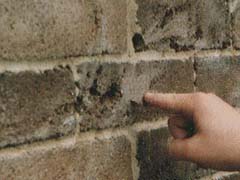
(Image B) |
Excessive steps taken to remove absorbed Graffiti from porous face brick.
Excessive sandblasting or angle grinding can damage surfaces permanently. Even after these harsh removal methods, the Graffiti may still be visible due to seeping into porous surfaces. Furthermore, the surface and overall appearance may be worsened. (Image B) |
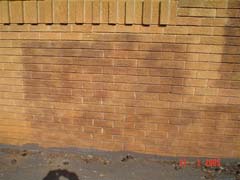
(Image C) |
Painting over existing Graffiti on face brick.
Trying to paint out Graffiti tags on face brick is often not an effective method of removing Graffiti. Very often the colour will not match the face brick and the Graffiti shadow will most likely resurface. In instances where face brick has been painted in order to cover Graffiti, the problem is worsened and the cost to restore the wall to it's original Graffiti and paint-free condition is substantial. (Image C) |
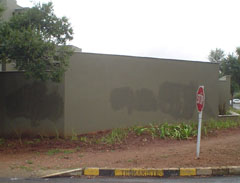
(Image D) |
Painting over existing Graffiti on painted surfaces.
Attempting to remove Graffiti from a painted surface by painting over it often proves to be very ineffective. The reason for this is two-fold. Firstly, simply painting over the Graffiti without removing it first may result in the Graffiti resurfacing through the new layer of paint. Secondly, it is often difficult to colour-match the paint exactly so as to restore the wall to its original colour. By creating a block-out effect with poorly matched colour paint, it may be seen as a fresh canvass for Graffiti vandals. (Image D)
|
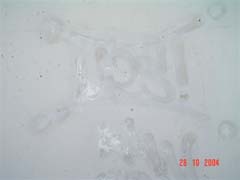
(Image E) |
Damaged paint from incorrect application processes.
Removing Graffiti from painted surfaces is a very delicate and time-consuming process. Timing is of the utmost importance, as one needs to be careful not to remove the original surface paint with the Graffiti. (Image E) |
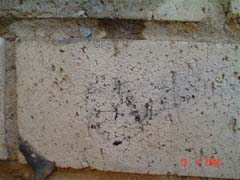 (Image F) (Image F) |
Over working surfaces.
Excessive scrubbing can lead to permanent surface damage. (Image F) |
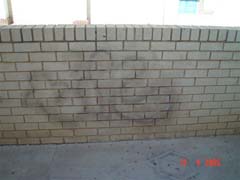
(Image G) |
Using incorrect chemicals.
Incorrect chemicals can leave large traces of Graffiti visible and may possibly reduce the effectiveness of approved Graffiti removal chemicals and processes. (Image G) |
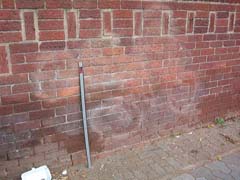
(Image H) |
Using abrasive chemicals.
Harsh chemicals can ruin the appearance and structural integrity of walls and surfaces permanently.
Often these products are not suitable for effective Graffiti removal.
(Image H)
|






 (Image F)
(Image F)
